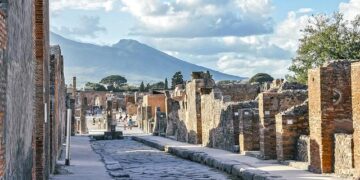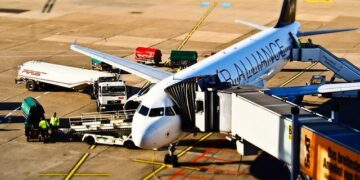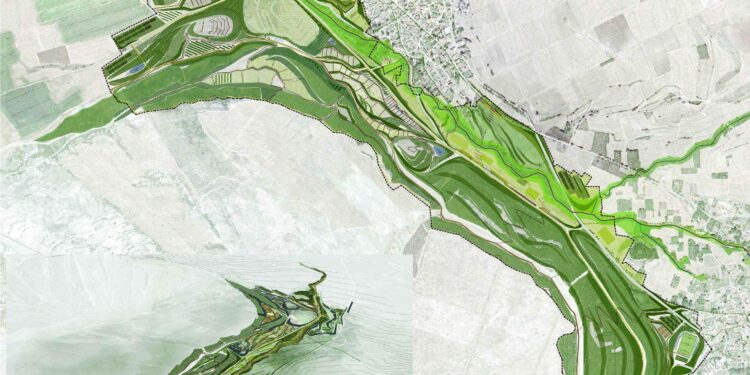In a significant move towards enhancing biodiversity and protecting wildlife habitats, ecological corridors in the Kelowna region are set to receive a substantial boost. Local officials and environmental groups have announced new initiatives aimed at expanding and improving these vital green corridors, which serve as critical pathways for animal movement and plant dispersal. The developments come amid growing concerns over habitat fragmentation and the urgent need to sustain healthy ecosystems in the face of urban expansion. This article explores the upcoming projects and their expected impact on Kelowna’s natural landscape.
Ecological Corridors to Enhance Wildlife Connectivity in Kelowna Region
The Kelowna region is set to witness significant improvements in habitat connectivity through the development of new ecological pathways designed to support local wildlife populations. These corridors aim to bridge fragmented landscapes, allowing animals to safely move between vital habitats, access resources, and maintain genetic diversity. The initiative focuses on creating underpasses, restoring native vegetation, and reducing barriers such as busy roads and expanding urban areas that currently hinder wildlife movement.
- Enhanced habitat connectivity: Linking forests, wetlands, and grasslands
- Wildlife-friendly infrastructure: Animal crossings and fencing upgrades
- Community involvement: Local groups contributing to planting and monitoring
- Species conservation: Protecting at-risk mammals, birds, and amphibians
| Corridor Location | Main Species Benefited | Project Status |
|---|---|---|
| Mission Creek Greenway | Black Bears, Coyotes | Under construction |
| Ellison Provincial Park Link | Mule Deer, Western Toad | Planning Phase |
| Okanagan Lake Shoreline | Great Blue Heron, Beaver | Completed |
Collaborative efforts among municipal planners, environmental groups, and Indigenous communities have been pivotal in shaping these corridors as multifunctional green spaces that serve both wildlife and residents. By integrating ecological science with urban development, the project supports biodiversity preservation while enhancing recreational opportunities. The approach reflects a growing recognition of the importance of connecting habitats in a rapidly changing landscape, ensuring Kelowna’s wildlife has the resilience needed to thrive in the years ahead.
City Officials Outline Strategic Plans to Expand Green Networks
Kelowna’s urban landscape is set to benefit from new investments aimed at enhancing its interconnected green spaces. Officials have detailed a multi-faceted approach focused on creating an extensive network of ecological corridors that will serve not only as wildlife habitats but also as recreational pathways for residents. Key actions include expanding tree canopy coverage, restoring native plant species, and installing green roofs in strategic urban zones. These steps are designed to improve biodiversity, reduce urban heat effects, and promote sustainable transportation alternatives.
Highlighted elements of the strategic plan include:
- Establishment of wildlife crossings to reduce roadkill incidents and maintain ecological continuity.
- Development of pedestrian-friendly green trails with native flora for community engagement and education.
- Collaboration with local stakeholders to integrate green infrastructure into future development projects.
| Action Item | Projected Completion | Expected Outcome |
|---|---|---|
| Native Plant Restoration | 2025 Q3 | Improved habitat quality |
| Green Roof Installation | 2026 Q1 | Reduced urban heat island effect |
| Wildlife Crossings | 2025 Q4 | Safer animal migration routes |
Experts Urge Community Engagement and Policy Support for Corridor Development
Leading conservationists and urban planners emphasize the urgent need for active community involvement alongside strengthened policy frameworks to successfully advance ecological corridor initiatives. These corridors are vital in preserving biodiversity, facilitating wildlife movement, and promoting healthier ecosystems amid ongoing urban expansion. Experts argue that without robust public participation and clear legislative backing, efforts to establish and maintain these green pathways risk falling short of their potential impact.
Key strategies highlighted include:
- Engaging local residents through educational outreach and volunteer programs
- Implementing incentives for landowners who contribute to corridor connectivity
- Integrating corridor planning into municipal zoning and development policies
- Allocating dedicated funding streams at multiple government levels
| Stakeholder | Role | Benefit |
|---|---|---|
| Community Groups | Outreach & monitoring | Enhanced local stewardship |
| Municipal Governments | Policy implementation | Improved land-use planning |
| Environmental NGOs | Research & advocacy | Stronger conservation outcomes |
| Private Landowners | Corridor participation | Financial incentives & habitat protection |
Key Takeaways
As Kelowna moves forward with enhanced support for ecological corridors, the initiative marks a significant step toward preserving biodiversity and promoting sustainable urban development. With increased funding and community engagement, these green pathways are set to strengthen connections between natural habitats, benefiting both wildlife and residents alike. The coming months will reveal how these efforts translate into tangible environmental improvements, underscoring Kelowna’s commitment to ecological stewardship.






























